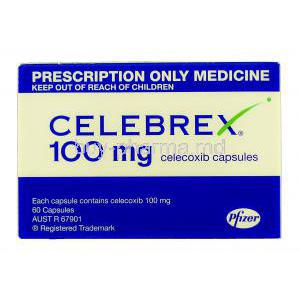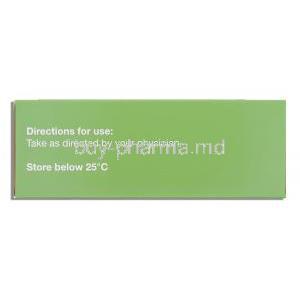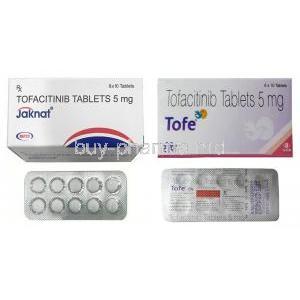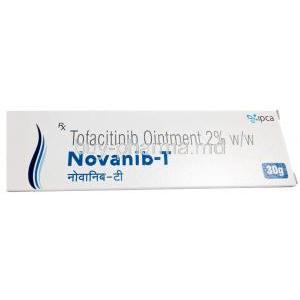Celebrex
- I. Introduction
- II. Uses of Celebrex
- III. How Celebrex Works
- IV. Dosage and Administration
- V. Composition
- VI. Side Effects
- VII. Common Side Effects
- VIII. Off-Label Use
- IX. Storage
- X. Interaction
- XI. Warning
- XII. Contraindication
- XIII. Careful Administration
- XIV. Important Precautions
- XV. Administration to the Elderly
- XVI. Administration to Pregnant Women and Nursing Mothers
- XVII. Administration to Children
- XVIII. Overdosage
- XIX. Handling Precautions
I. Introduction
The origins and background of Celebrex can be traced back to a group of medications called anti-inflammatory drugs (NSAIDs). Also known as celecoxib, Celebrex has gained recognition as a treatment for pain and inflammation. Its journey began in the 1990s and gradually gained prominence in the pharmaceutical market. Regarding FDA approval, Celebrex successfully went through a process of clinical trials in 1998. These trials revealed both the benefits and possible risks associated with the drug. Through a review process that followed the FDA's strict regulations, Celebrex demonstrated its effectiveness and safety for treating various medical conditions.
II. Uses of Celebrex
Celebrex is a brand-name prescription medication that contains celecoxib and is used to treat the following conditions in adults by reducing inflammation (swelling and damage) and relieving pain:
- Osteoarthritis (OA) 123
- Rheumatoid arthritis (RA) 123
- Ankylosing spondylitis (a form of arthritis that affects the spine) 1
- Acute (short-term) pain 13
- Primary dysmenorrhea (period pain or menstrual cramps) 1
Celebrex is also approved to treat juvenile rheumatoid arthritis (JRA) in children ages 2 years and older 1.
Please note that Celebrex can cause mild or serious side effects. For more information on the possible side effects of Celebrex, talk with your doctor or pharmacist 1.
1: Medical News Today 2: Mayo Clinic 3: Drugs.com
III. How Celebrex Works
The way Celebrex works in the body is quite fascinating. It primarily acts by blocking enzymes responsible for producing chemicals called prostaglandins. These chemicals are known to cause pain, fever, and inflammation. Celebrex explicitly targets an enzyme called COX 2, which decreases prostaglandin production and ultimately reduces inflammation. The unique action of Celebrex on COX 2 is why it has gastrointestinal side effects compared to other NSAIDs (nonsteroidal anti-inflammatory drugs). It's important to note that while COX 1 enzymes protect the stomach lining, COX 2 enzymes are more involved in pain and inflammatory responses. Celebrex's ability to selectively target COX 2 ensures pain relief without compromising the protective functions of COX 1.
IV. Dosage and Administration
Dosage recommendations for conditions may vary. Here are the recommended dosages for ailments: Osteoarthritis: Take 200 mg once daily. Rheumatoid arthritis: Take 100 200 mg twice daily. Acute pain & primary dysmenorrhea: Start with 400 mg and follow up with 200 mg if necessary. To minimize cardiovascular risks, avoiding long-term continuous use of the medication is advisable. Regularly reassess the need for treatment. Patients with liver impairment should reduce their dosage accordingly. However, those with hepatic insufficiency should not take Celebrex. To ensure dosage, always follow your prescribed dosages, use a calibrated measuring device, and schedule routine checkups to monitor the effectiveness of the medication and identify any abnormalities early on.
V. Composition
Celebrex contains Celecoxib as its active ingredient, and the concentration of Celecoxib varies based on the strength of the capsules, which range from 50 mg to 400 mg. Celebrex includes ingredients like lactose monohydrate, sodium lauryl sulfate, and povidone to enhance its formulation. These inactive ingredients contribute to the stability of the drug. Improve how the body absorbs it. Celebrex is primarily available in form, making easy ingestion and accurate dosing convenient.

VI. Side Effects
Celebrex, like all NSAIDs, has its share of side effects. While most patients handle it fine, some may experience symptoms ranging from mild to severe. Common side effects include headaches, abdominal pain, or high blood pressure. On the other hand, rare side effects can involve gastrointestinal bleeding, kidney problems, or severe allergic reactions.
VII. Common Side Effects
Issues: Signs may include stomach discomfort, bloating, and feeling queasy. Symptoms related to the central nervous system: Individuals may encounter dizziness, trouble sleeping, or occasional episodes of tiredness. Effects on the heart and blood vessels: High blood pressure and swelling are noticeable cardiovascular adverse reactions.
VIII. Off-Label Use
Celebrex is also approved to treat juvenile rheumatoid arthritis (JRA) in children ages 2 years and older 1.
Off-label use refers to the practice of prescribing Celebrex for conditions that are not specifically approved by the FDA. Celebrex has occasionally been prescribed for conditions such as ankylosing spondylitis, juvenile arthritis, and migraines even though these are not its primary FDA-approved indications 14. When used off-label, Celebrex has demonstrated effectiveness. However, it is essential to remember that the potential therapeutic benefits must outweigh the risks. It is crucial for both doctors and patients to be aware of the potential risks involved with off-label use of Celebrex 4.
Please note that Celebrex can cause mild or serious side effects. For more information on the possible side effects of Celebrex, talk with your doctor or pharmacist 1.
1: Medical News Today 2: Mayo Clinic 4: WebMD 3: Drugs.com
IX. Storage
To keep Celebrex effective and safe, storing it in dry environments is essential. The ideal temperature range for storage is between 15 30°C. Exposing the medication to moisture or extreme temperatures can compromise its efficacy. Typically, Celebrex maintains its potency for around 24 months after manufacturing. Consuming the drug beyond this period is not recommended as its therapeutic effects may diminish. To prevent contamination or degradation, always ensure the container is tightly closed. Avoid storing Celebrex in places with humidity or direct sunlight. If you notice any changes in its appearance or smell, refrain from using it.
X. Interaction
Some medications may interact with Celebrex, such as Warfarin (a blood thinner), Fluconazole (an antifungal), ACE inhibitors, and ARBs (used for hypertension). Regarding alcohol, tobacco, or certain foods, it is generally acceptable to consume alcohol in moderation without risks. However, excessive alcohol intake can increase the risk of issues. Using tobacco concurrently with these medications can amplify risks. As for food interactions, none have been identified so far. If you're taking medications, it's essential to undergo regular therapeutic monitoring. This helps identify abnormal interactions and allows for timely medical interventions if needed.
XI. Warning
Considering the impact on heart health, Chronic use of Celebrex at higher doses can increase the risk of cardiovascular issues such as heart attacks or strokes. Patients with existing heart conditions need to be cautious. Gastrointestinal complications: NSAIDs like Celebrex can severely affect the digestive system, including bleeding, ulcers, or perforation in the stomach or intestines. These complications can occur suddenly. Even be life-threatening. Monitoring hepatic function: Regularly checking kidney and liver function is crucial when taking NSAIDs like Celebrex. These medications can worsen blood pressure, cause new-onset hypertension, and may also impair kidney function, leading to possible renal failure.
XII. Contraindication
Situations where Celebrex should not be used: Celebrex is not recommended for managing operative pain after coronary artery bypass graft surgery due to an increased risk of cardiovascular complications. Specific medical conditions that may be problematic: People with liver impairment and those with asthma, hives, or allergic reactions should avoid using Celebrex after taking aspirin or other NSAIDs. Allergy considerations: Individuals known to have hypersensitivity to celecoxib, sulfonamides, or any components of Celebrex should refrain from using it.
XIII. Careful Administration
During the stages of treatment with Celebrex, monitoring for any adverse reactions closely is essential. This includes being vigilant for bleeding or cardiovascular issues. Patients with a history of ulcers or GI bleeding should approach Celebrex therapy with caution and under the supervision of a medical professional, as they are more prone to experiencing gastrointestinal problems. It is also crucial to make adjustments and regularly perform coagulation tests for patients on anticoagulant therapy while using Celebrex, as the combination can increase the risk of bleeding.
XIV. Important Precautions
The role of blood tests during treatment is to detect any abnormal changes in blood composition or kidney function, thereby ensuring that any harmful effects of Celebrex are identified and addressed early on. Patients must be aware of warning signs such as unexplained weight gain, swelling, or dark stools and promptly seek medical attention if they experience any of these symptoms. Patients should also be educated about the importance of seeking medical intervention if they experience chest pain, slurred speech, weakness on one side of the body, or severe abdominal pain.
XV. Administration to the Elderly
Dosage considerations for age groups: Considering the physiological changes that occur in the elderly, it is generally advisable to start with lower doses and gradually increase them. This approach helps minimize risks. Increased sensitivity and monitoring: Elderly patients may experience heightened sensitivity to NSAIDs, making them more susceptible to renal complications. It is crucial to monitor these patients to ensure their safety. Factors related to drug elimination and metabolism in adults: Due to diminished renal or hepatic functions in older adults, drugs may take longer to be eliminated from their bodies. In some cases, dosage adjustments may be necessary.

XVI. Administration to Pregnant Women and Nursing Mothers
There is currently no evidence suggesting that Celebrex causes harm to the fetus during pregnancy and breastfeeding. However, its use in the third trimester can increase the risk of closing the ductus arteriosus in the fetus. It is strongly recommended to avoid taking Celebrex during the trimester. Suppose the benefits outweigh the risks; it may be considered for use only during the first and second trimesters. Although it is not definitively known whether Celebrex is excreted in breast milk, caution should be exercised due to potential adverse effects on nursing infants.
XVII. Administration to Children
Celebrex, an FDA-approved medication, can treat rheumatoid arthritis in patients aged two and above. The dosage of Celebrex for patients is usually determined based on their weight. However, it's important to note that the safety and effectiveness of Celebrex for pediatric conditions are not yet well established. Regarding children below two years old or weighing 10 kg, it is not recommended to use Celebrex due to limited data on its safety and effectiveness in this age group.
XVIII. Overdosage
Recognizing the signs and symptoms of an overdose includes experiencing difficulty in breathing, feeling drowsy, experiencing nausea, gastrointestinal bleeding, or even slipping into a coma. An overdose can also lead to failure or high blood pressure. If an overdose occurs, it is crucial to seek medical attention. The initial steps may involve lavage (stomach pumping) and administering activated charcoal to absorb the harmful substances. Symptomatic treatment will follow. Prolonged exposure to doses can have long-term effects such as chronic kidney problems, cardiovascular complications, or ongoing issues with the digestive system.
XIX. Handling Precautions
Healthcare professionals must wear gloves when handling Celebrex and ensure it is stored in its container with childproof closures. Taking precautions such as keeping it in areas away from children's reach and avoiding disposing of Celebrex in open trash bins can help reduce the risk of accidental ingestion. If you have any expired Celebrex, following the FDA guidelines by returning it through a take-back program or following local environmental regulations for proper disposal is recommended.



















